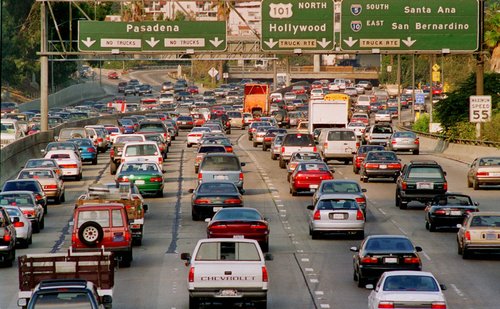Blumenberg and Melville's article Beyond Spatial Mismatch identifies Denver as one of example of a "postpedestrian urban form" created as a result of the majority of the city's growth occurring after the widespread adoption of the automobile. Denver, therefore, is not like many Northeastern and Midwestern cities that have major concentrations of low-income families in the inner city, where property values are lower and housing affordable. (Blumenberg and Melville 2004) As the non-profit Mile High Connects explains in their Denver Equity Atlas: "Poverty in Denver is a regional issue". (Mile High Connects 2012)
Employment is also relatively dispersed in Denver, which further complicates the task of connecting poor residents to job opportunities throughout the metro area. Mile High Connects claims that a spatial mismatch exists between major job centers and affordable housing, especially in the south and southwest suburbs.
FasTracks will make a dent in this issue. The expansion of light-rail and bus-rapid transit will increase the number of jobs within a walkable distance of fixed guideway transit from 17% to 26%, a 60% increase. (Mile High Connects 2012) When conventional bus lines are included in this coverage rate, Denver ranks fairly high among the top 100 metropolitan ares in the US with over 80% of jobs accessible by transit. (Brookings Institution 2012)
Still, as Blumenberg and Melville point out, an equitable transit system that effectively serves low-income communities is very difficult to accomplish, especially in an auto-oriented city. It may not even be feasible for public transit to fully meet the transportation needs of the poor. Alternatively, the overwhelming evidence of the effectiveness of automobiles in enabling the poor to find and maintain a job should not be ignored. (Blumenberg and Melville 2004)
Two Denver-based non-profit organizations run programs to support car ownership for low-income families: Project Self-Sufficiency and the Good Neighbor Garage. Funding, however, seems to rely exclusively on charitable donations. Given the demonstrated economic impact of car ownership, shouldn't some of the $6.8 billion FasTracks investment have been directed towards programs such as these?
References
Mile High Connects (2012). The Denver Regional Equity Atlas: Mapping Access to Opportunity at a Regional Scale.
Blumenberg, E. and Melville, M. (2004). Beyond the Spatial Mismatch: Welfare Recipients and Transportation Policy. Journal of Planning Literature, 19(2), 182–205. doi:10.1177/0885412204269103

No comments:
Post a Comment
Note: Only a member of this blog may post a comment.